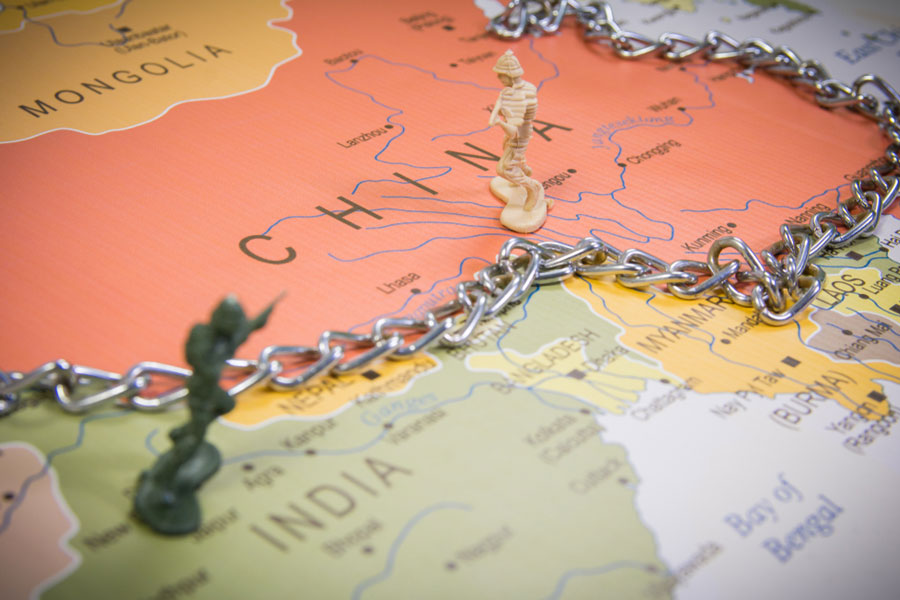 |
There is something strangely haunting about the beauty of Cumbria. With its vista of lush green mountains — the Cumbrians call them fells — and serene lakes, the county in North Western England is straight out of a proverbial picture postcard.
Now, it was my first English holiday, and I was enamoured by everything I saw — from the average countryside sights of fells to gentle green meadows dotted with grazing sheep and black and white Jersey cows. Twilight crept into the sky only just before midnight as my partner and I reached Clifton, a small village about five minutes from the market town of Penrith. Journey’s end here was an 18th century coaching inn charmingly converted into a bed-and-breakfast called the George & Dragon.
 |
The next morning, we awoke to a luscious English breakfast (read: eggs served sunny side up, sausages, bacon and potatoes, grilled tomatoes and wild mushrooms) served to us on antique, weathered tables. But it was an old-fashioned breakfast with a crucial difference: the ingredients were all organic and sourced from the Lowther Estate, a 70,000-acre farm.
We’d chosen our base of operations well. Penrith is situated on the edge of Cumbria and so allows you to easily reach the Lake District National Park (the largest English National Park situated within Cumbria and formed in 1951 to protect it from excessive commercial exploitation). Alternatively, you can visit the Pennines, a low-rising mountain range that boasts of moors and peatlands, dales and meadows.
 |
Armed with a well-thumbed map, we were soon merrily wending our way in a compact Vauxhall Corsa through the quaint and delightful towns of the Lake District.
Ullswater was the first lake we set eyes on and it was idyllic. A mellow sun, blue sky and tiny puffy clouds watched over an occasional elderly couple wading into the lake lugging their little canoes. Little ducks paddled through the waters. And don’t forget the scores of dog-lovers sauntering along with their friendly canines. I fell instantly in love with Millie and Billie, a pair of big, playful collies, who clearly adored their young owner.
 |
After a brief stop at Airaforce, a much-visited but overrated waterfall in the district, we took a break at The Ramblers Bar. The rustic bar in Glenridding turned out to be a haven of good food where we washed down an excellent pat of goat’s cheese and brioche with a Cumberland Cream Ale. Note: the Cumbrians are passionate about their brews.
One of the high points of our drive was the town of Ambleside on Lake Windermere, the largest natural lake in the region. This is a holidaymakers’ paradise with lovers walking hand in hand, teenage boys and girls tossing frisbees in the park and others sunbathing by the lake. There were yachts bobbing about on the shimmering blue waters too.
To wind it up without a small snack was unimaginable. So we stopped off for a bite at the Waterhead Coffee Shop, a charming little establishment that sold ice creams dunked in hot chocolate. One look at the tantalising tea cake holders piled high with homemade scones, tarts, and fruit pies was enough to break down all resistance. I dug into sinful scones topped with blueberry jam and clotted cream.
 |
I was loathe to leave it all behind but our next destination was Dove Cottage in Grasmere, which was a 15-minute drive. This is where Wordsworth — he belongs to the trio of Lake Poets that includes Robert Southey and Samuel Taylor Coleridge — lived for a decade with his sister Dorothy and wife Mary. Having grown up on a healthy dose of English literature, it was hard to believe I’d made it to Wordsworth’s home. The stone cottage has low-beamed ceilings and dark rooms with tiny windows. There’s even a lock of the poet’s hair preserved carefully.
But the most exhilarating part of our sojourn was, perhaps, driving up to Scafell Pike, the highest mountain in England at 3,209ft above sea level. Narrow roads, crazy bends and ups and downs made it a tortuous drive. And even though we had to cover a bare 40-odd miles up to Scafell, it took us three long hours. The view of the craggy mountains adjoining Wastwater, the deepest English lake, that you get at the end of the drive, however, makes it well worth the effort.
We also made an excursion to the famous Hadrian’s Wall. The remains of the defensive fortification built by the Roman emperor Hadrian is a UNESCO World Heritage Site, but I was a bit disappointed by the piles of bricks that I saw. And then there were the ruins of the ancient Lanercost Priory, an Augustinian monastery dating back to 1169. It was one of the first monasteries to be dissolved by Henry VIII in 1536. The priory has a few interesting tombs including that of a baby girl called Lady Elizabeth Howard Dacre. Her tomb is adorned with a beautifully carved stone figure.
Yes, it was all about outdoorsy fun. But there was so much to see that we had to keep up a tough schedule. And, I’d be happy to do it all over again.
 |
Ready reckoner
Getting there: From London, you can drive or take the National Express coach (www.nationalexpress.com), which has regular services to the Lake District.
Staying there: At Holybeck Ghyll (www.holbeckghyll.com), you’ll have to pay about £210 (Rs 16,000 approx.) per night.










